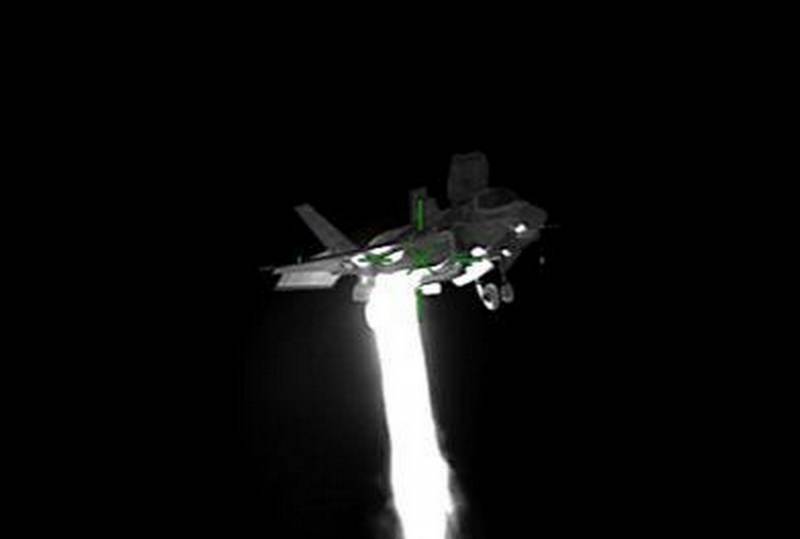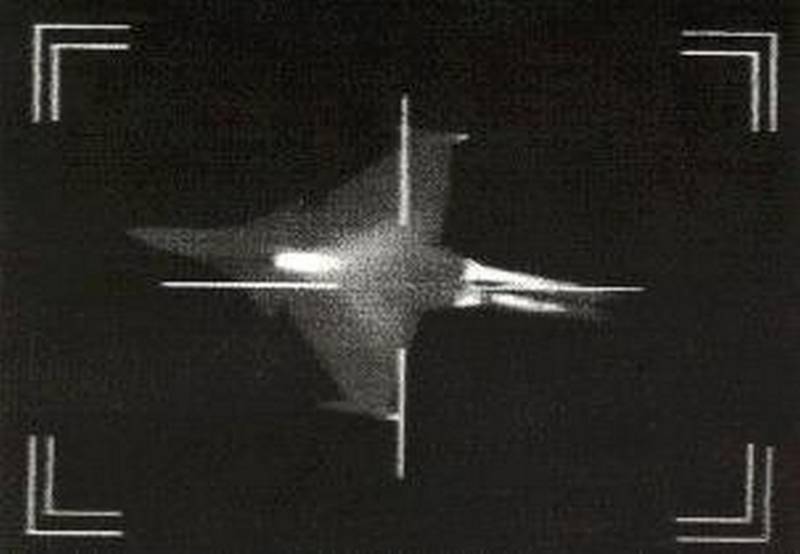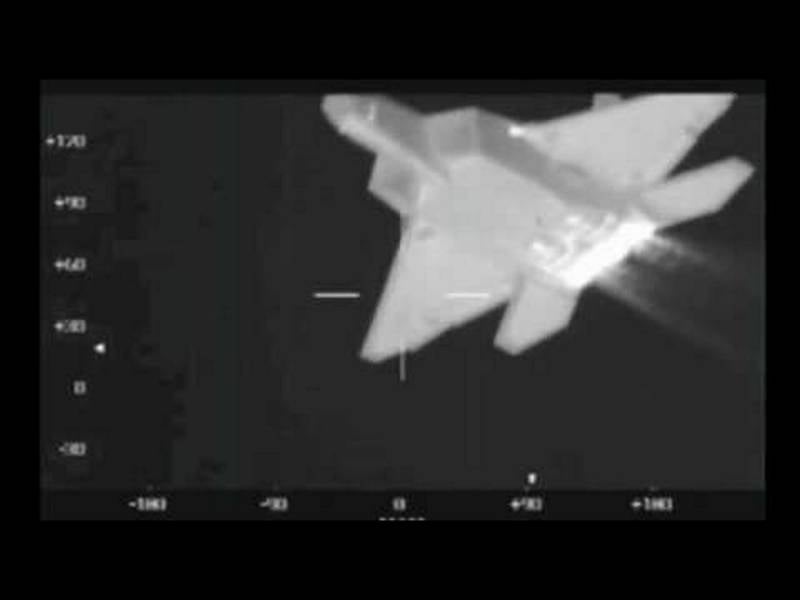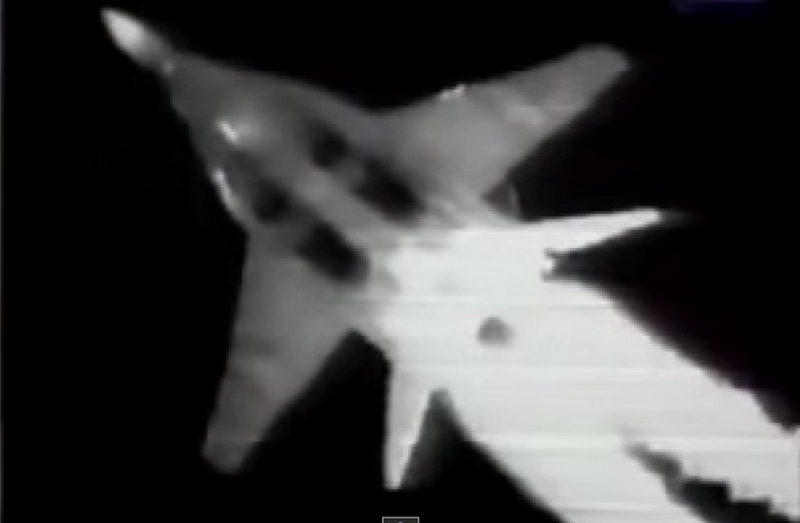Reduced infrared signature should not be underestimated: the subtleties of the air "hunting" with the radar off
An equally important indicator of the low visibility of a promising multi-purpose fighter of the 21st century is its small infrared signature, which is extremely important in medium and long range air battles, where enemy fighter pilots turn off their radar and rely solely on external target designation and their own on-board optical-electronic sighting systems, Some kind of “cat-and-mouse game” begins, the winner of which will certainly be the one whose optical-location (infrared) sensors are more sensitive are thermal, and the thermal signature of the airframe is smaller than that of the opponent. In addition, proper piloting of the machine plays a big role in this case, when the pilot relies on his intuition, and as rarely as possible puts the fighter tail parts of his fighter jet warmed up by the turbine gases as rarely as possible, and also uses maximum and afterburner modes of operation engines. The combination of these measures and gives an advantage in such types of air confrontation.
As for the direct thermal signature of the airframe and engine nozzles of modern tactical fighters of the transitional and 5 generations, they are very easy to see thanks to the use of high-resolution infrared cameras, which recently became popular with representatives of the manufacturers of thermal imaging equipment visiting various aerospace salons different parts of the world for the purpose of advertising their products. Thus, infrared images of the American promising F-35B “Lightning II” fighter, taken by FLIR System during its performance at the Farnborough International Air Show this summer, have become very informative. The shooting was carried out with a FLIR Safire 380-HD infrared camera with maximum resolution. What did you manage to observe?
In the vertical take-off mode of the F-35B STOVL, in the afterburner mode of operation of the most powerful TRDDF, the F135-PW-600 (19507 kg thrust), the central and tail parts of the airframe had a thermal “luminosity” similar to the nose elements of the fuselage, i.e. no heating occurred. It only says that the manufacturers took good care of reducing the infrared signature of this car, and detecting this fighter into the forward hemisphere at medium thrust modes in 10000-12000 kgf will be real only from minimum distances 25-35 km using such an OLS as Domestic OLS-35 (Su-35С) or OLS-UEM (MiG-35). Domestic fighters, including the entire 4 + generation, on the contrary, have a very high IR "luminosity", since the tail (hottest) part of the nacelle has a more open architecture, and clearly repeats the shape of the engines themselves. The space between the engine nacelle and the outlines of the combustion chamber is not quite enough to install a thick envelope of several layers of heat-absorbing material. In the infrared images obtained by other infrared means, one can see the “luminosity” of our front-line fighter MiG-29, the American Raptor, the European Typhoon and the French Raphal.
The last in this line looks the most serious. Engineers "Dassault" perfectly "covered" engines M88-2 from the leakage of thermal radiation from the surface of the units on the tail of the airframe. The photo shows the "cold" engine nacelles engines, as in the F-35B. At the same time, the Rafale OSF optic-electronic sighting system has a range of detection and tracking of warm-contrast targets in 145 km to the rear hemisphere. At Typhoon, the engine nacelles are already beginning to “warm up”: their contrast with the jet gas stream is not as big as the F-35B or “Rafale”.
And now the fun part. No matter how paradoxical it may sound, the F-22A F119-PW-100 engines working on afterburner warm up the tail of an unobtrusive fighter strongly enough, the heat radiation can be transferred from the rotary flaps of the nozzles to the fuselage, and during a long flight in a cruiser supersonic "Raptor" will be a “A candle in the night field”, even at the slightest displacement of the angle of flight relative to the enemy.
And finally, the most “bright” representatives of the fighter aviation we can consider our MiG-29 and Su-27, which, when infrared, resemble real meteors or fireballs. The afterburner undergoes significant heating and a characteristic glow not only of the rear surfaces of the airframe, but also of the central parts of the fuselage, including the wing attachment areas. Detecting such an object using the same modern infrared system with a distributed DAS aperture (installed on the F-35A) will not be so difficult even from 50-60 km, which gives American and European vehicles advantages in "radar-free" combat.
We can talk about a decent reduction in the infrared visibility of the airframe with respect to the Chinese X-Gen X-generation multipurpose tactical fighter J-5: its propulsion system of two TRDFs WS-20G is “planted” in deep and capacious nacelles, and therefore there is a possibility for numerous experimenting with its intra-fuselage insulation.
As for our cars, there are a lot of technological ways to reduce the infrared airframe on the motor nacelle section, one of which is to install a special multilayer nano screen in the space between the turbofans and internal nacelle surfaces, in which interlayer gaps will be blown with cold air injected from small air intakes, located either at the root of the wing, or on the aerodynamic wing inflows, where there are sufficient internal volumes to scheniya large number of ducts. As is well known, in the first modifications of the MiG-29 (“The 9-12 / 9-13” product) on the upper surfaces of the inrush there were additional upper air inlets for quick take-off from unprepared runways, called upper entrances. The gliders of the MiG-29 and Su-27 family of fighters have enormous potential to upgrade their “thermal” perfection to adequately protect against enemy optical-electronic sighting systems and missiles with infrared homing types AIM-9XXII, IRIS-T or MICA-IR.
Information sources:
http://forum.militaryparitet.com/viewtopic.php?pid=161768#p161768
http://www.airwar.ru/enc/fighter/mig29.html
http://www.airwar.ru/enc/fighter/mig29-13.html
http://www.findpatent.ru/patent/241/2413161.html




Information